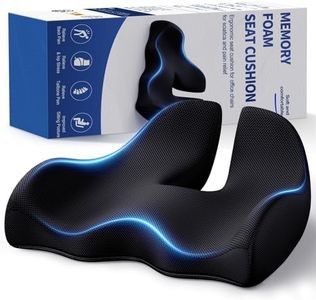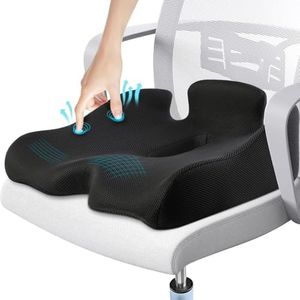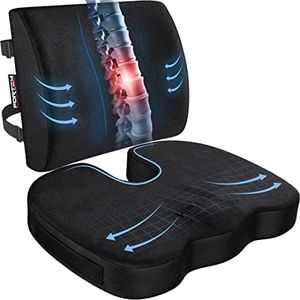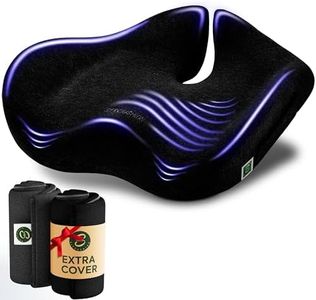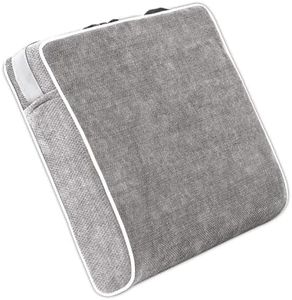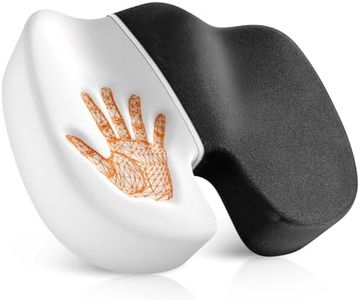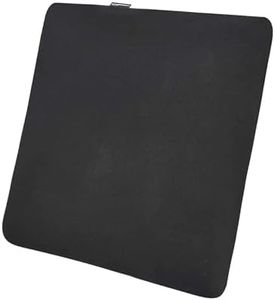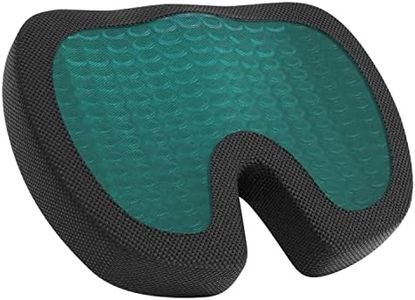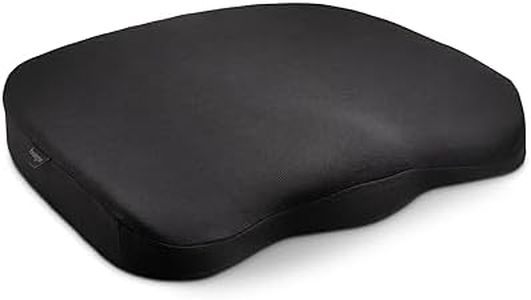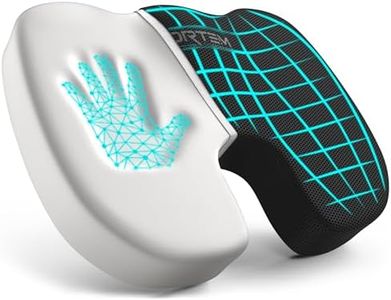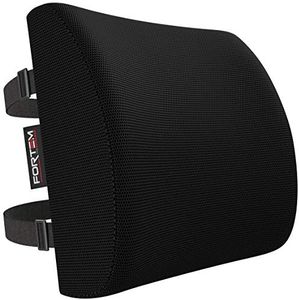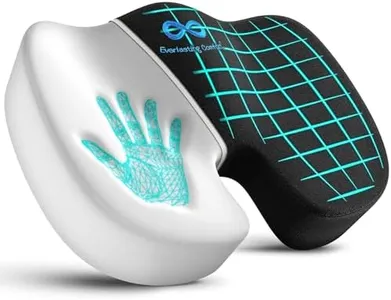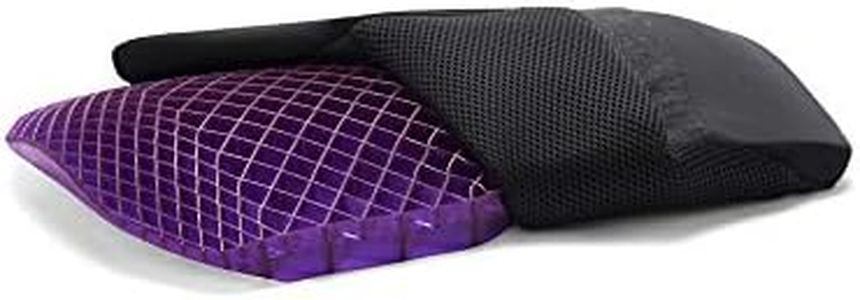We Use CookiesWe use cookies to enhance the security, performance,
functionality and for analytical and promotional activities. By continuing to browse this site you
are agreeing to our privacy policy
10 Best Office Chair Cushions
From leading brands and best sellers available on the web.Buying Guide for the Best Office Chair Cushions
Choosing the right office chair cushion can make a noticeable difference in your comfort and productivity, especially if you spend long hours sitting at your desk. The best cushion for you will depend on your specific needs, such as support for your back, relief for pressure points, or simply adding softness to a hard chair. To make the right choice, it helps to understand the different features and materials available, and to consider what aspects of comfort and health matter most in your daily routine.MaterialThe material of a cushion affects its feel, durability, and how well it keeps you cool or warm. Common options are memory foam, gel, and high-density foam. Memory foam molds to your body and offers great support, ideal if you need relief for pressure points or back pain. Gel cushions tend to stay cooler for longer periods, which helps if you find regular foam gets too warm or uncomfortable. High-density foam is firm and supportive but usually less contouring than memory foam. When choosing, think about what feels best to you: do you prefer a soft, body-molding surface, or do you need something firmer and cooler?
Shape and DesignCushions come in various shapes: simple flat pads, contoured cushions, and ergonomic designs with special cutouts or curves. Some help with tailbone (coccyx) pressure, others support hips and thighs, or even the lower back. Contoured and ergonomic shapes are helpful if you have specific pain or need posture support, while flat or lightly contoured cushions are great for general comfort. Consider whether you want focused support for a problem area or if a more universal cushion is sufficient for you.
Thickness and FirmnessThe thickness and firmness of a cushion determine how much support and cushioning you get. Thicker cushions provide more padding, which is great for hard chairs, but might lift you too high if your chair already has decent padding. Firmer cushions maintain their shape over long periods, while softer ones may flatten over time but give a plush feel. If you need strong support or are heavier, choose a firmer, thicker cushion; if you want something that just adds a bit more comfort to an already soft chair, go for a thinner or softer cushion.
Cover Material and WashabilityThe outer cover of the cushion is what you’ll feel with your body, so softness and breathability are important. Some covers are made with mesh or polyester for breathability and easy cleaning, while others use velour for softness. Many cushions have removable, machine-washable covers, which makes maintenance simple especially if you use your chair all day or eat at your desk. If easy cleaning is a priority, look for cushions with washable covers.
Non-slip FeaturesA good cushion should stay in place throughout the day. Look for cushions with non-slip bottoms or straps if you move around a lot or sit on slippery surfaces. Non-slip features prevent the cushion from sliding out of place every time you stand up or readjust, which adds to safety and convenience. If you’re active at your desk, or your chair is leather or plastic, non-slip bottoms are especially useful.
Size and CompatibilityCushions come in different sizes to fit different chairs and body types. Make sure the cushion isn’t too small or too big for your chair, as an ill-fitting cushion can be uncomfortable or awkward. Measure your chair’s seat and compare with the cushion dimensions before buying. If you’re taller, heavier, or have a wide chair, a larger cushion may be a better fit.
